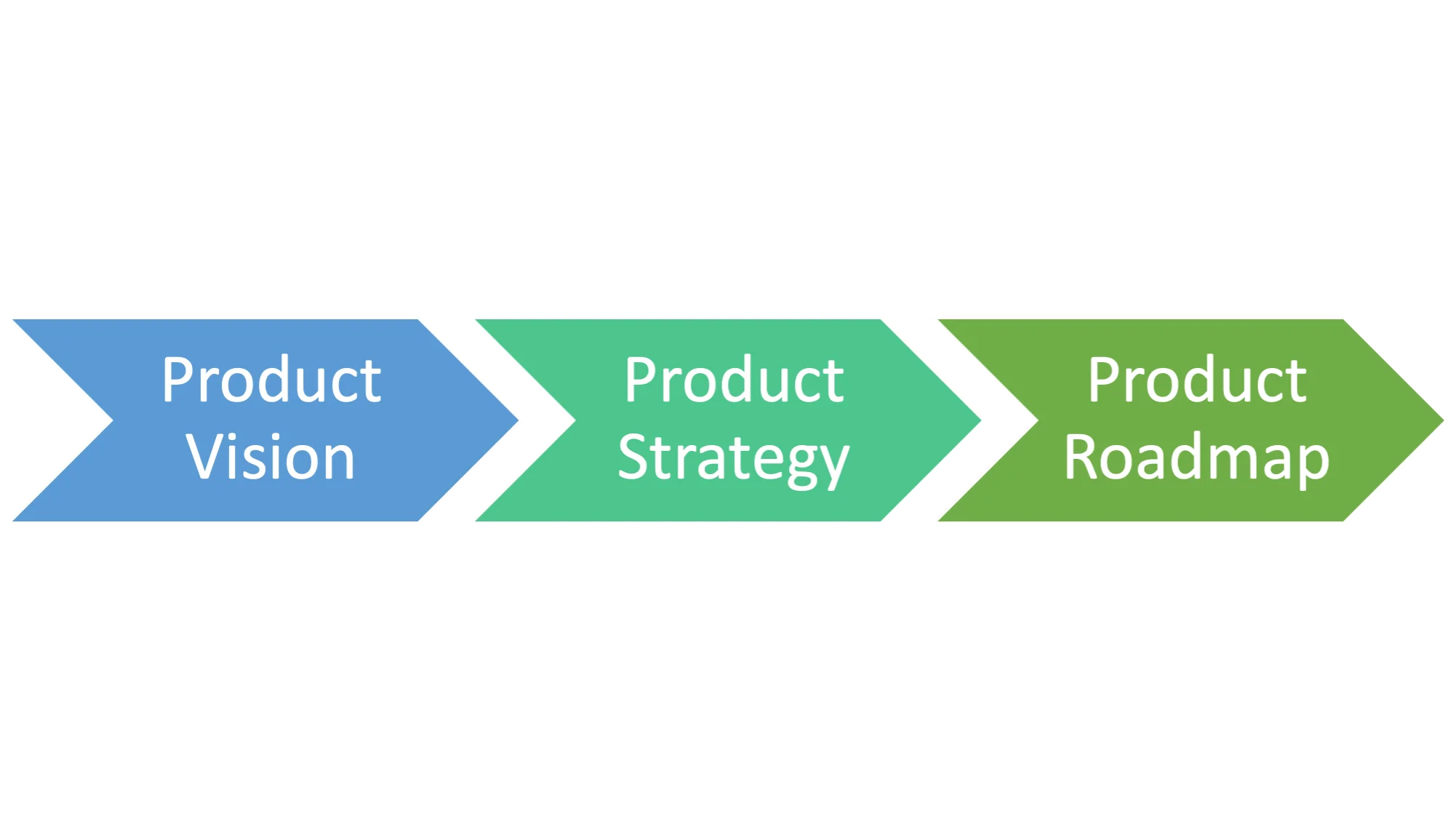Disclaimer: I have created a new version of this blog post. I didn’t delete this old post because I want to show you to see how my thinking has changed.
In my previous blog post, I talked about how to create an inspiring product vision. In this blog post, I will talk about defining your product strategy. This describes how you intend to meet your vision.

How to get started
Writing product strategies is hard. Product strategies can be dull. Yet, they’re integral to the work you do. To write one you need to make sure you’ve got a good understanding of the problems, your users and their needs.
Stakeholders across the business will have varying views on the success of meeting the product vision. HR might speak to hiring X number of people and creating a more diverse workforce. Comms might speak to increasing traffic and conversion. Senior stakeholders might speak to the competition and how they’ve captured a particular part of the market.
I recommend bringing these views into a room to generate as many ideas as possible.
Then ask them to think about the following key areas:
- Start by creating a shared understanding between participants around the problem space. Introduce the product vision and talk about why it is important. Talk about your users and their needs.
- Run a hopes, dreams and fears exercise.
- Generate ‘How Might We’ statements based on needs and problems users face.
- Ask participants how they will know whether they are successful in meeting those ‘How Might We’ statements.
Top tip: use the 1-2-4 method to encourage introverts and extroverts to do their best thinking!
An alternative is to ask stakeholders to do an outcome mapping exercise. It’s another way of working out what people actually care about.
Whatever approach you take, this is the start of your product strategy. Use this information to feed into the next step.
Objectives and Key Results (OKRs)
OKRs can be a good way to organise your product strategy. They encourage longer-term thinking, and help teams to align to the bigger picture.
The objective is a high-level ambition or aspiration. They should inspire and be explicit. Aim for 3-5 objectives.
The key result is how we measure that objective. They should be SMART. Aim for 2-5 key results per objective.
As a Product Manager, what you build should align to your OKRs. When creating OKRs do it as a team so you are creating buy-in. Review OKRs quarterly, and share across the business. If you don’t meet your OKRs, that’s ok. OKRs are ambitious to push you.
This workshop structure from Atlassian on setting OKRs is a helpful one to follow.
Examples of OKRs
In our last blog post, we focused on Tidal.
Our product vision is to provide a high-fidelity music experience that is as good as the experience of listening to music in a world-class studio.
First example
Objective: To create an amazing onboarding experience that makes people want to stay.
Key result:
- Reduce the bounce rate from 50% to 25% by Q3.
- To reduce the time it takes to join the service from an average of 2 minutes to 1 minute by Q3.
Second example
Objective: Launch awesome new features on our premium tier.
Key result:
- Increase the number of new features in planning stages from 2 to 5 by Q4.
- Increase the number of new features committed to build from 1 to 3 by Q4.
- Increase the number of people signing up to the premium tier from 1,000,000 to 2,000,000 by Q4.
Writing OKRs can be tough. An alternative is this template created by Melisa Perri. It’s a useful tool you can get participants to complete.
In my next blog post, I will talk about product roadmaps. A roadmap describes your statement of intent. It outlines how you intend to meet your product strategy and vision.
Disclaimer: I have created a new version of this blog post. I didn’t delete this old post because I want to show you to see how my thinking has changed.


